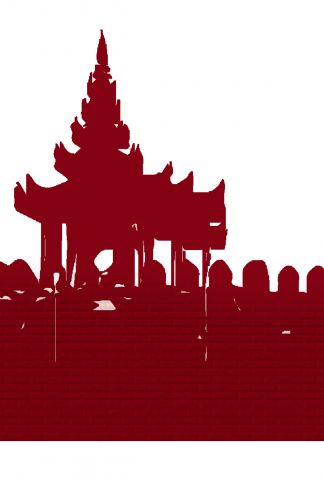Vertical Tabs
Mandalay Division

Mandalay Region is an administrative division of Myanmar. It is located in the center of the country, bordering Sagaing Region and Magway Region to the west, Shan State to the east, and Bago Region and Kayin State to the south. The regional capital is Mandalay. In the south of the division lies the national capital of Naypyidaw. The division consists of seven districts, which are subdivided into 30 townships and 2,320 wards and village-tracts. Mandalay Region is important in Burma's economy, accounting for 15% of the national economy.The history of Mandalay Region is the same as that of much of Upper Myanmar except that for much of Burmese history, the political power emanated out of royal capitals located in Mandalay Region. The country's present capital, Naypyidaw, and most former royal capitals of the Burmese nation--Pagan, Ava, Amarapura, Mandalay—are all located here.
The Tibeto-Burman speaking Pyu were the first historical people to dominate the dry zone in central Myanmar that includes Mandalay Region as early as the 1st century AD. By the early 9th century, the Pyu were decimated in a series of wars with the Nanzhao kingdom from Yunnan. The Burmans, who had been migrating into the region from Yunnan in the 9th century, founded a city of their own, Pagan, in 849. The Pagan dynasty gradually came to dominate the central zone over the next two centuries, and by the late 11th century, all of present day Myanmar. The Burmese language and script came to prominence with royal patronage of Pagan kings. After the fall of Pagan to the Mongols in 1287, parts of central Myanmar came to be controlled by a series of rulers: the Mongols (1287-c.1303), Myinsaing (1298–1313), Pinya (1313–1364), and Sagaing (1315–1364). In 1364, Ava kingdom led by Burmanized Shan kings reunified all of central Myanmar. Central Myanmar was under Ava's control until 1527, and under the Shans of Monhyin (1527–1555). Burmese literature and culture came into its own during this era. Central Myanmar was part of the Taungoo kingdom from 1555 to 1752. Parts of the region fell briefly to the Mons of Pegu (Bago) (1752–1753). Konbaung Dynasty ruled the region until December 1885 when it lost all of Upper Myanmar in the Third Anglo-Burmese War.
The British administration organized seven divisions in Upper Myanmar: Mandalay, Meiktila, Minbu, Sagaing, and the Federated Shan States (North and South). Mandalay Division included what is now Kachin State. Circa 1940, Meiktila Division was merged with Mandalay Division. Much of Upper Myanmar, including Mandalay Division, was under the Japanese rule during World War II between May 1942 and March 1945. When the country gained independence from the United Kingdom in January 1948, the Myikyina and Bhamo districts were carved out to form Kachin State. The majority of the population in Mandalay Region are Bamar (Burmans). In the Mandalay metropolitan area, however, a large community of Chinese, most of whom are recent immigrants from Yunnan, now nearly rival the Bamar population.[4] A large community of Indians also reside in Mandalay. A dwindling community of Anglo-Burmese still exists in both Pyinoolwin and Mandalay. A number of Shan people live along the eastern border of the region. Burmese is the primary language of the division. However, Mandarin Chinese is increasingly spoken in Mandalay and the northern gem mining town of Mogok.
See how the Mary K. Yap Foundation is supporting programs like the "Myanmar Orphans" Project ....Learn more >
Copyright © 2014 - 2025 Mary K. Yap Foundation Inc. All rights reserved.
Designed by WTCMM
Languages
- English

- myanmar


